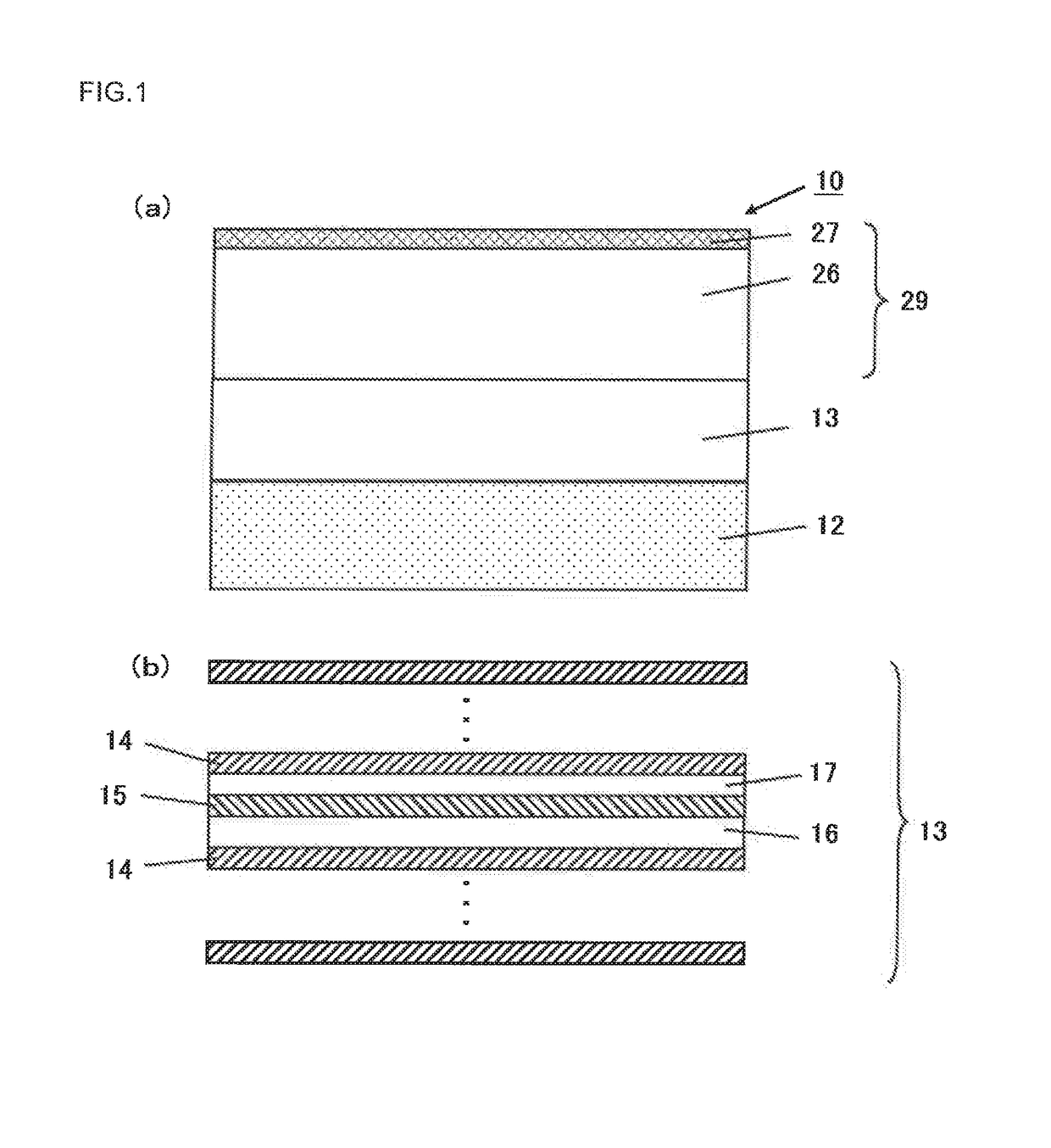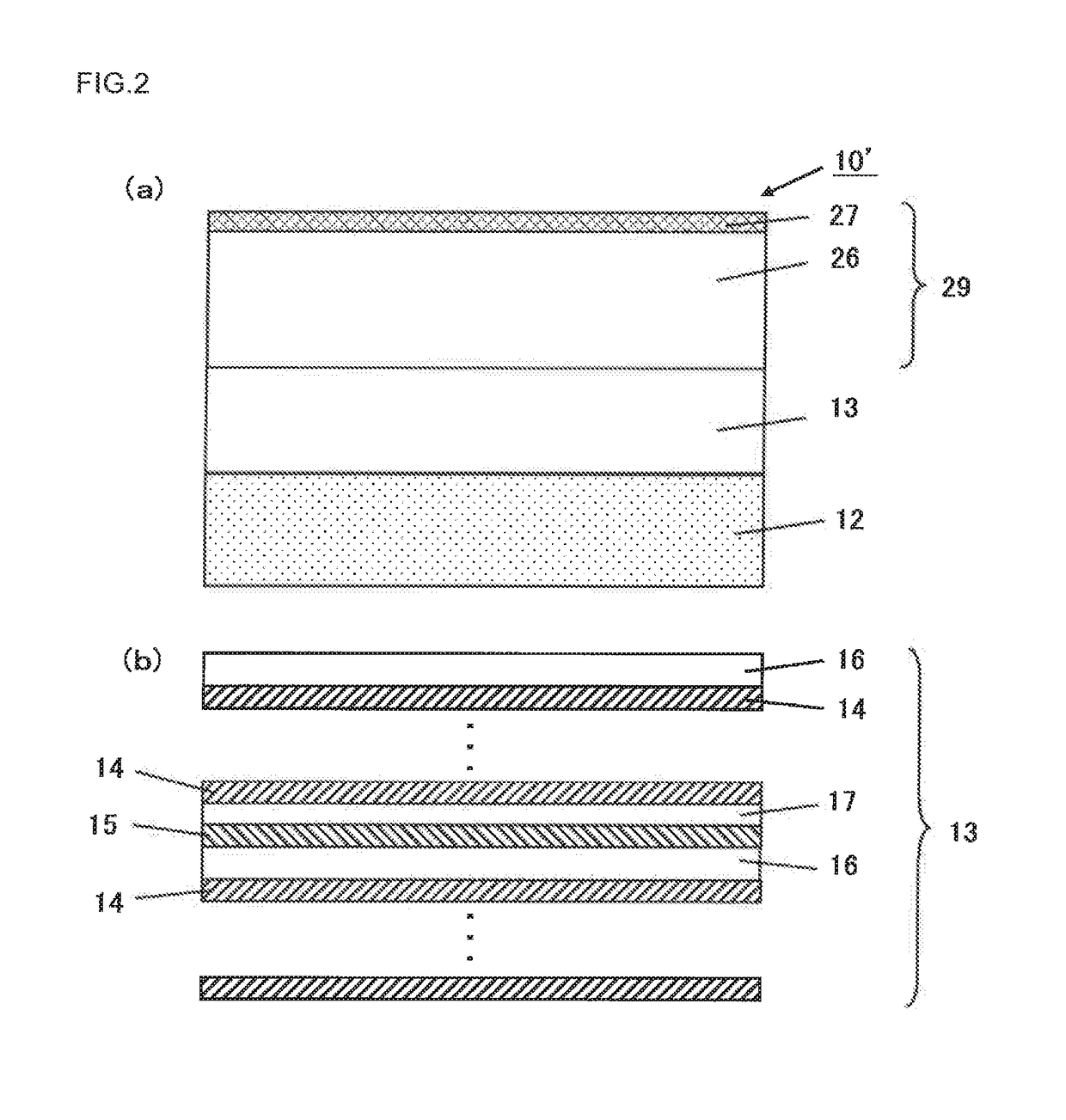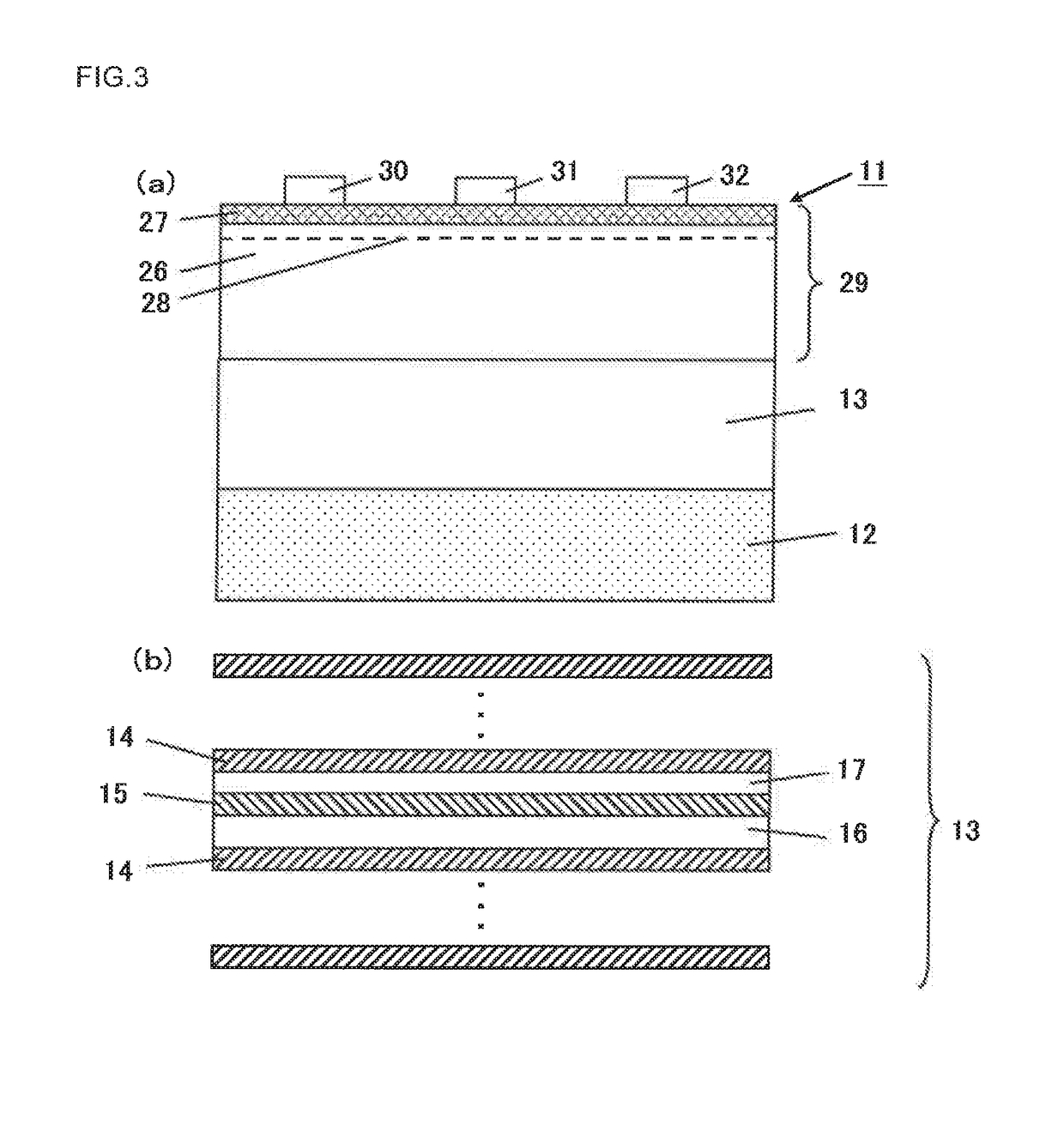Semiconductor base and semiconductor device
a semiconductor and semiconductor technology, applied in the direction of semiconductor devices, electrical equipment, transistors, etc., can solve the problems of nitride semiconductor layer crack formation or reduction in crystal quality, the constant of these substrates is greatly different, etc., to reduce cost, shorten the growth time, and suppress crystallinity deterioration and crack elongation
- Summary
- Abstract
- Description
- Claims
- Application Information
AI Technical Summary
Benefits of technology
Problems solved by technology
Method used
Image
Examples
example 1
[0082]Three semiconductor bases 10 as shown in FIG. 1 were fabricated. Note that the substrate 12 was a single-crystal silicon substrate, the channel layer 26 was made of GaN, and the barrier layer 27 was made of AlGaN. Moreover, in the buffer layer 13, the first layer 14 was an AlN layer, and the second layer 15 was a GaN layer. The first composition graded layer 16 and the second composition graded layer 17 each had a composition shown by AlxGa1-xN (0≤x≤1). The distribution of an Al content rate x in the buffer layer 13 was as shown in FIG. 4. In FIG. 4, d1 represents the thickness of the first composition graded layer 16, and d2 represents the thickness of the second composition graded layer 17, satisfying a relation of d1>d2.
[0083]The degree of the lattice constant changed in the first composition graded layer 16 was 0.88% / nm, and the thickness was 2.8 nm. The degree of the lattice constant changed in the second composition graded layer 17 was larger than that in the first compo...
example 2
[0086]Three semiconductor bases were fabricated as in Example 1. Nevertheless, the degree of the lattice constant changed in the first composition graded layer 16 was 1.76% / nm, and the thickness was 1.4 nm. The degree of the lattice constant changed in the second composition graded layer 17 was larger than that in the first composition graded layer 16, the thickness of: the second composition graded layer 17 was 0.25 rim or more to less than 1.4 nm, and the degrees of the lattice constant changed were both 1.4% / nm or larger.
[0087]Using the semiconductor bases fabricated in Example 2, the crystallinity and crack length were measured as in Experimental Example 1. Table 2 shows the results.
[0088]Additionally, the above-described measurement results of Experimental Examples 1 to 3 were also shown again in Table 2 for comparison.
TABLE 2Crystallinity:Epitaxial layerhalf-valuestructurewidth (arcsec)CrackDegree of latticeby X-raylengthconstant changeddiffraction(mm)Example 1with composition...
PUM
 Login to View More
Login to View More Abstract
Description
Claims
Application Information
 Login to View More
Login to View More - R&D
- Intellectual Property
- Life Sciences
- Materials
- Tech Scout
- Unparalleled Data Quality
- Higher Quality Content
- 60% Fewer Hallucinations
Browse by: Latest US Patents, China's latest patents, Technical Efficacy Thesaurus, Application Domain, Technology Topic, Popular Technical Reports.
© 2025 PatSnap. All rights reserved.Legal|Privacy policy|Modern Slavery Act Transparency Statement|Sitemap|About US| Contact US: help@patsnap.com



